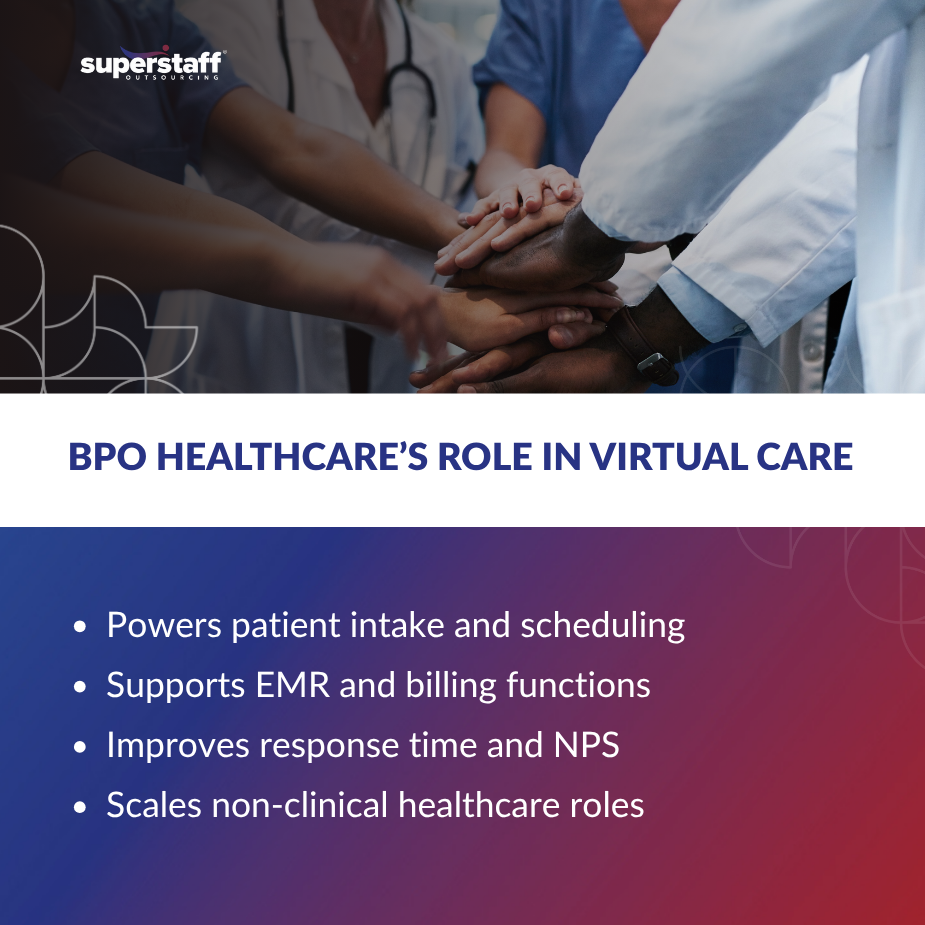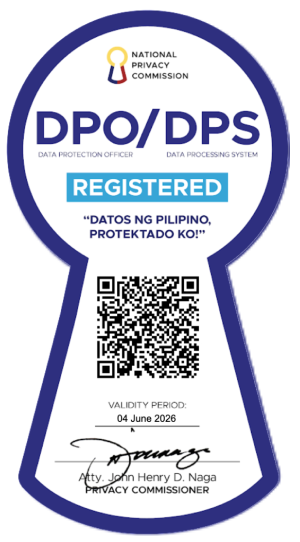
Telehealth promised to democratize care—but is it falling short? The rapid adoption of virtual consults uncovered logistics struggles beneath the surface. BPO healthcare is not just a cost-saving mechanism; it’s the backbone that makes virtual care scalable, equitable, and patient-centric.
This blog explores how strategic outsourcing can plug gaps in telemedicine delivery and ensure it lives up to its promise.
Virtual Care Is Booming—but Buckling Under Pressure
Since the onset of the pandemic, virtual care has surged. What began as an emergency measure soon became a mainstream channel, with patients and providers alike embracing video consults, remote monitoring, and digital follow-ups. As adoption soared, so did expectations. Patients now demand seamless, tech-enabled interactions, immediate scheduling confirmations, and real-time insurance verification.
Yet the systems behind the screen are buckling. Providers are grappling with operational overload—manual scheduling, follow-up reminders, billing and claims processing clog up their time. Administrative bottlenecks aren’t just nuisances; they directly cut into clinician productivity. Doctors are forced to pause between consults to chase down paperwork or resolve app glitches. This friction doesn’t just slow down care; it frustrates patients, fuels burnout, and ultimately strains the promise of telehealth.
To handle these challenges, healthcare leaders are rethinking their staffing strategies—and looking offshore.
The Cracks Behind the Screen: What’s Breaking Virtual Care Today?
Virtual care isn’t just about video doctor visits. There’s a full support ecosystem involved—from appointment booking to follow-up billing—that must work flawlessly. Unfortunately, cracks are appearing. Patients often face high wait times before a telehealth session even begins. Insurance verifications drag out over days. Apps malfunction during appointments. And when patients seek assistance, they frequently encounter generic chatbots or understaffed call centers. Digital care begins to feel cold, impersonal, and disjointed.
These cracks are not merely technological—they’re operational. Providers suffer burnout from excessive admin work. Patient satisfaction isn’t anchored solely in doctor interaction—it depends on the full journey: smooth onboarding, clear instructions, timely communications, and resolution of technical issues. Patients judge telehealth by the overall experience, not just the clinician’s bedside manner.
These pain points aren’t clinical—they’re operational, and that’s where offshore support shines.
How Offshore Teams Power a Smoother Virtual Care Experience

Offshore teams fill these operational gaps seamlessly. By outsourcing non-clinical functions—including patient intake, claims processing, appointment scheduling, and IT helpdesk support—they enable care providers to focus on patients.
Offshore BPOs bring scale. They can staff 24/7, matching patient time zones across the globe. During spikes in demand—say, flu season or regional outbreaks—these teams reallocate resources rapidly, ensuring no patient gets left waiting. Their virtual front desk manages appointment blocks, sends reminders, and assists with rescheduling—all without burdening in-house staff.
Specialized roles thrive offshore: billing and coding experts expedite claims; medical scribe teams document consults in real time; EMR-trained specialists ensure notes and data quality. For telehealth apps, offshore IT teams troubleshoot connectivity issues, reset user accounts, and guide patients through app installation.
The result? Cost savings, smoother throughput, and a better patient experience. But more significant than dollars saved is the way patients engage with care.
That’s where BPO healthcare becomes indispensable—not just for operational efficiency but for delivering patient-centric value.
Why Patient Experience Is the Real ROI of Outsourcing in Telehealth
Today’s patients expect swift, accurate responses and tech that just works. They expect personalized support—no generic scripts or self-service dead ends. When offshore teams manage follow-up reminders, collect patient feedback, or respond to app issues, drop-off rates decline and satisfaction rises. Multilingual support becomes a tangible asset in cosmopolitan markets.
Tracking Net Promoter Scores (NPS) becomes more meaningful: every prompt resolution, empathetic interaction, and technical reassurance boosts loyalty. Patient retention isn’t just about treatment outcomes—it’s about trust throughout the virtual journey. And when providers know they have a proficient offshore team handling administrative flow, they can focus on delivering quality care—without distractions.
With BPO healthcare, clinics are no longer limited by in-house bandwidth—they’re empowered by global support that scales and adapts.
What to Look for in an Outsourcing Partner for Virtual Care
The promise of offshore support hinges on selecting a partner that aligns with telehealth priorities. Care delivery demands data security—HIPAA in the U.S., GDPR in Europe—and an unwavering commitment to patient confidentiality. Partners must demonstrate secure infrastructure and certified compliance.
Cultural alignment matters too. Effective communication, empathy, and a shared sense of urgency ensure interactions feel genuine. This is where healthcare staff outsourcing solutions shine: agents with healthcare literacy, familiar with EHR/EMR systems, comfortable discussing appointments, billing, and follow-up steps in a compassionate tone.
Scalability is critical. A virtual care platform may not need 100 offshore staff today—but when telehealth volume doubles, can the partner scale quickly? The right offshore healthcare staffing agency offers flexible workforce models and rapid ramp-up, so providers aren’t left flat-footed during peak demand.
A bonus feature? Multilingual coverage. For global practices or providers serving immigrant populations, having support agents fluent in other languages enhances access and equity. Patients are more likely to follow through when they understand details clearly and feel understood.
With the right BPO healthcare partner, virtual care becomes a sustainable model—not just a pandemic-era substitute.
What Role Cebu, Manila, and Beyond Play in Scaling Virtual Care
The Philippines has emerged as a global hub for outsourcing excellence. With a strong English-speaking workforce, deep BPO infrastructure, and cost-competitive operations, the country is ideally positioned to power virtual care delivery. Cities such as Cebu and Manila house not just call center agents, but dedicated healthcare support professionals—trained in medical coding, EMR navigation, and telehealth IT.
SuperStaff, with its 400-strong agent network, is a case in point. By embedding offshore teams into clinical workflows—from intake to follow-up—SuperStaff ensures that providers offshore only where they lead: the examination, diagnosis, and treatment planning. All non-clinical tasks are handled with precision, empathy, and regulatory compliance.
This model isn’t theoretical—it’s already driving improvements in throughput, reducing patient anxiety, and allowing providers to operate at full capacity. And because teams are built for healthcare, they don’t just function—they shine in telemedicine support.
The Future of Telehealth & Offshore Collaboration
As virtual care shifts from video visits to remote monitoring, AI-driven diagnostics, and predictive engagement, the backend will become even more intricate. Offshore partners must evolve too. Imagine offshore nurses proactively following up on home vitals, BPO teams managing multi-channel patient education, and offshore data analysts flagging trends in telehealth usage—feeding back into provider decision-making.
At the same time, regulatory frameworks are tightening. Patient data must be secure, support agents must be trained in privacy protocols, and global consent laws must be obeyed. The right offshore partner will stay ahead of these changes, offering continuous training, compliance audits, and investment in secure infrastructure.
Ultimately, sustainable virtual care depends on orchestration: clinicians, AI, patients, and offshore teams working in harmony. Without offshore support, virtual care is fragile—costly to operate and susceptible to failure points. With it, virtual care becomes scalable, resilient, and truly patient-centered.
BPO Healthcare and the Road to Scalable Virtual Care
Virtual care isn’t broken—it’s incomplete. On its own, telemedicine often struggles under the weight of scheduling lags, admin overload, billing errors, and digital friction. But BPO healthcare offers a compelling solution. Offshore healthcare staffing agency models provide non-clinical operational muscle—filling gaps in billing, intake, scheduling, and IT support. This helps address core telehealth pain points, extends care hours, and ensures smooth patient journeys.
By integrating offshore support, providers don’t just save money—they elevate patient experience, maintain clinician productivity, and fortify telehealth workflows. That’s why today’s most forward-thinking healthcare organizations are embracing offshore models—rethinking internal staffing and adapting for the future.
BPO Healthcare: Conclusion
Virtual care isn’t broken—but incomplete without the right support behind the scenes. Telemedicine needs more than doctors on video—it needs operational muscle, cultural empathy, and technical resilience. Offshore teams bridge the gaps in cost, capacity, and patient satisfaction. Through BPO healthcare, offshore healthcare staffing agency partners offer healthcare staff outsourcing solutions that strengthen the full telehealth delivery chain.
BPO healthcare isn’t just a back-office strategy—it’s a competitive advantage. It lets providers scale rapidly, manage fluctuations, and deliver virtual care that truly connects.
BPO healthcare is the silent engine beneath the virtual consult. Ready to power your virtual care model with expert offshore support? Partner with SuperStaff and deliver care that truly connects.






